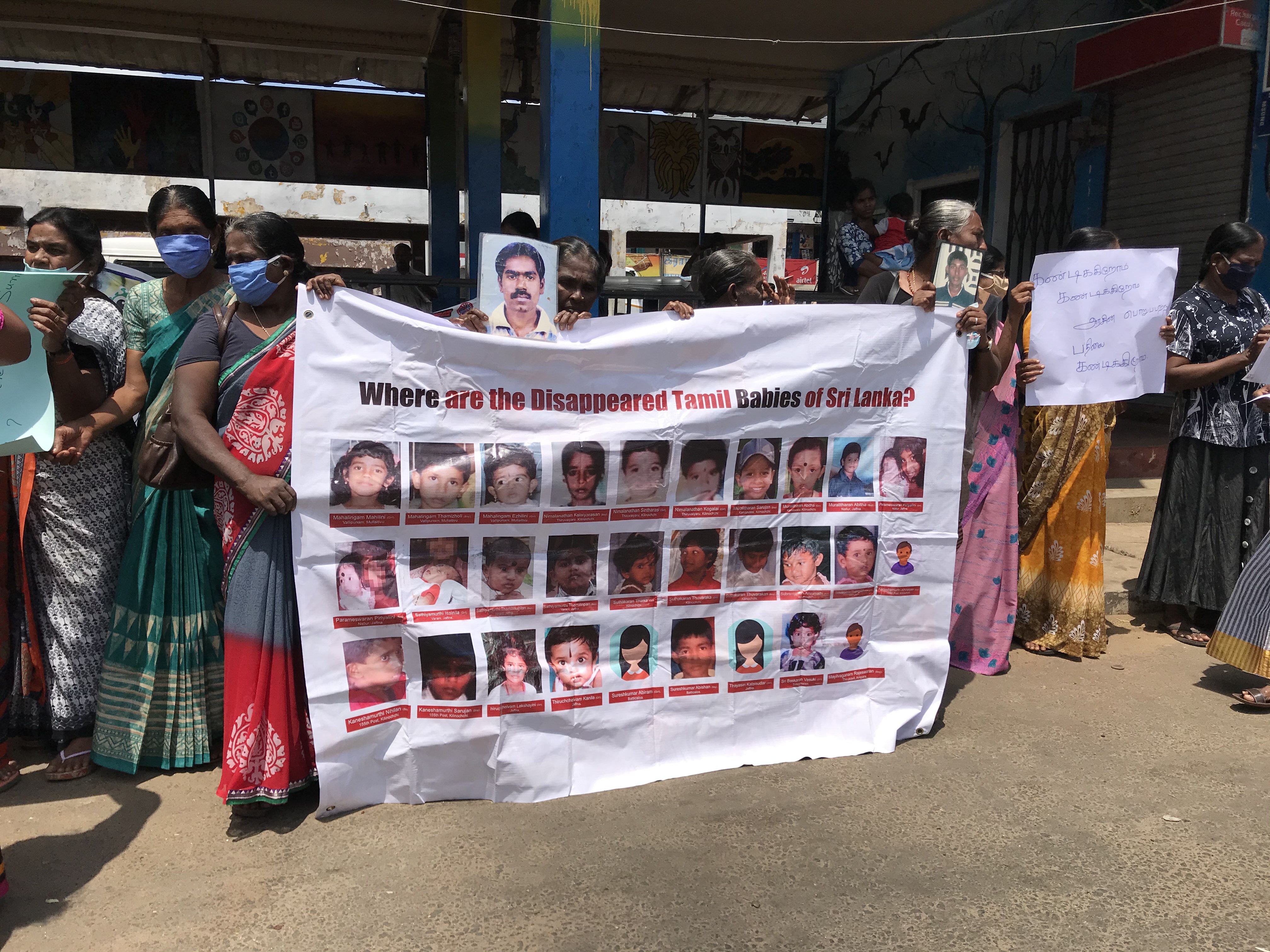
Tamil families of children who disappeared during the 2009 Mullivaikkal massacres, organised protests across the North-East urging the Sri Lankan government to deliver information on the whereabouts of their children.
During the demonstration near the old bus stand in Vavuniya, protestors told Tamil Guardian that they would consider International Children’s Day, observed in Sri Lanka on October 1, to be a "day of sorrow”.
Speaking further, they said,
“We have been protesting for over three years emphasising the truth in our cause. Still, no government has delivered justice to us. We have decided to observe [the day] as a day of sorrow.”
“Our democratic protest is subjected to a great deal of pressure and intimidation by the government which has contributed to the dwindling numbers in our protests. We are protesting to find our relatives. We don’t expect anything else from the government. So we will continue our fulmination unwaveringly until we find justice.”
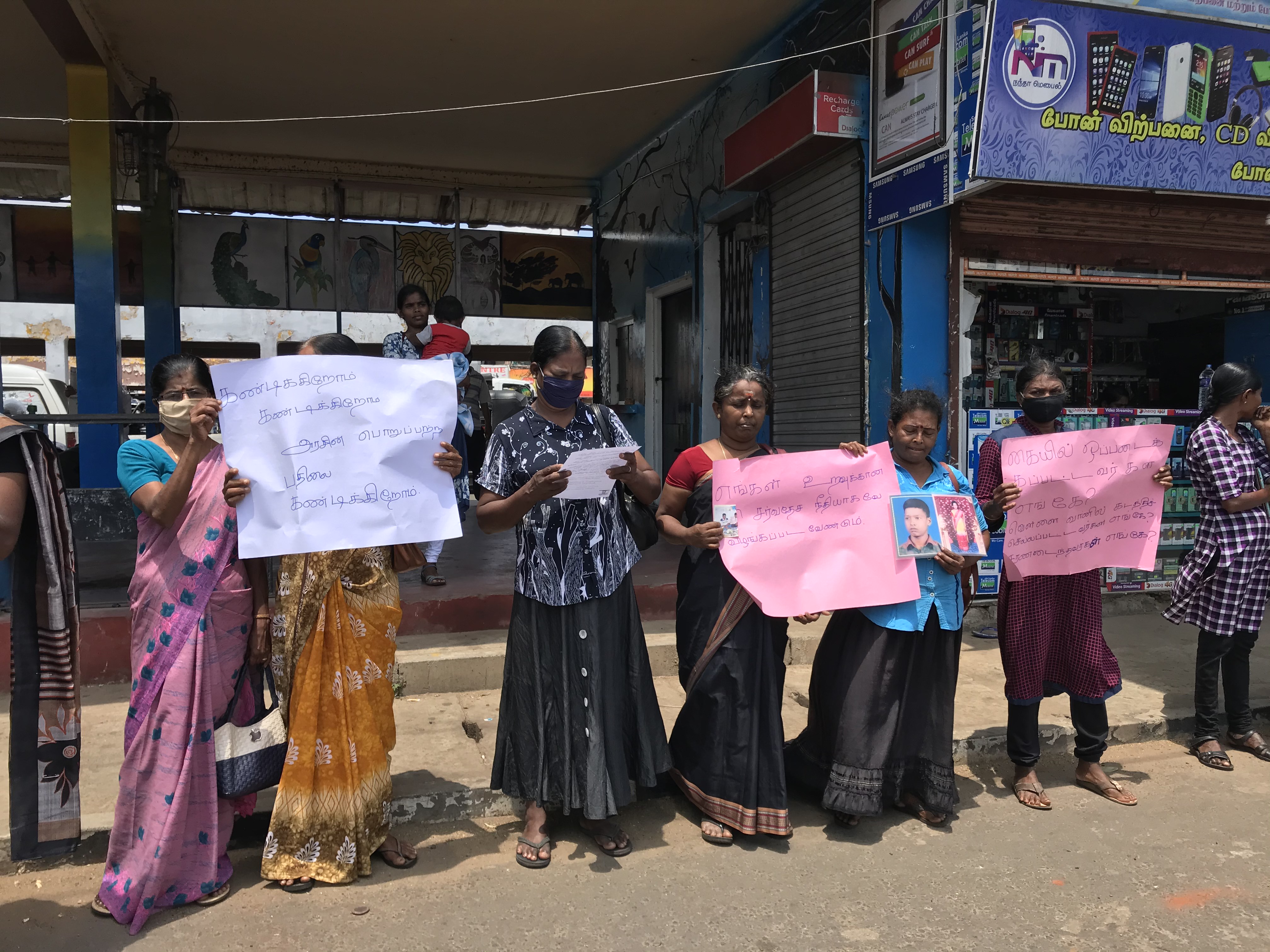
The families held placards that read:
‘Where are our relatives?’
‘Are Tamil children terrorists too?’
‘Where are the children who went to school?’
‘We condemn the irresponsible response of the government.’
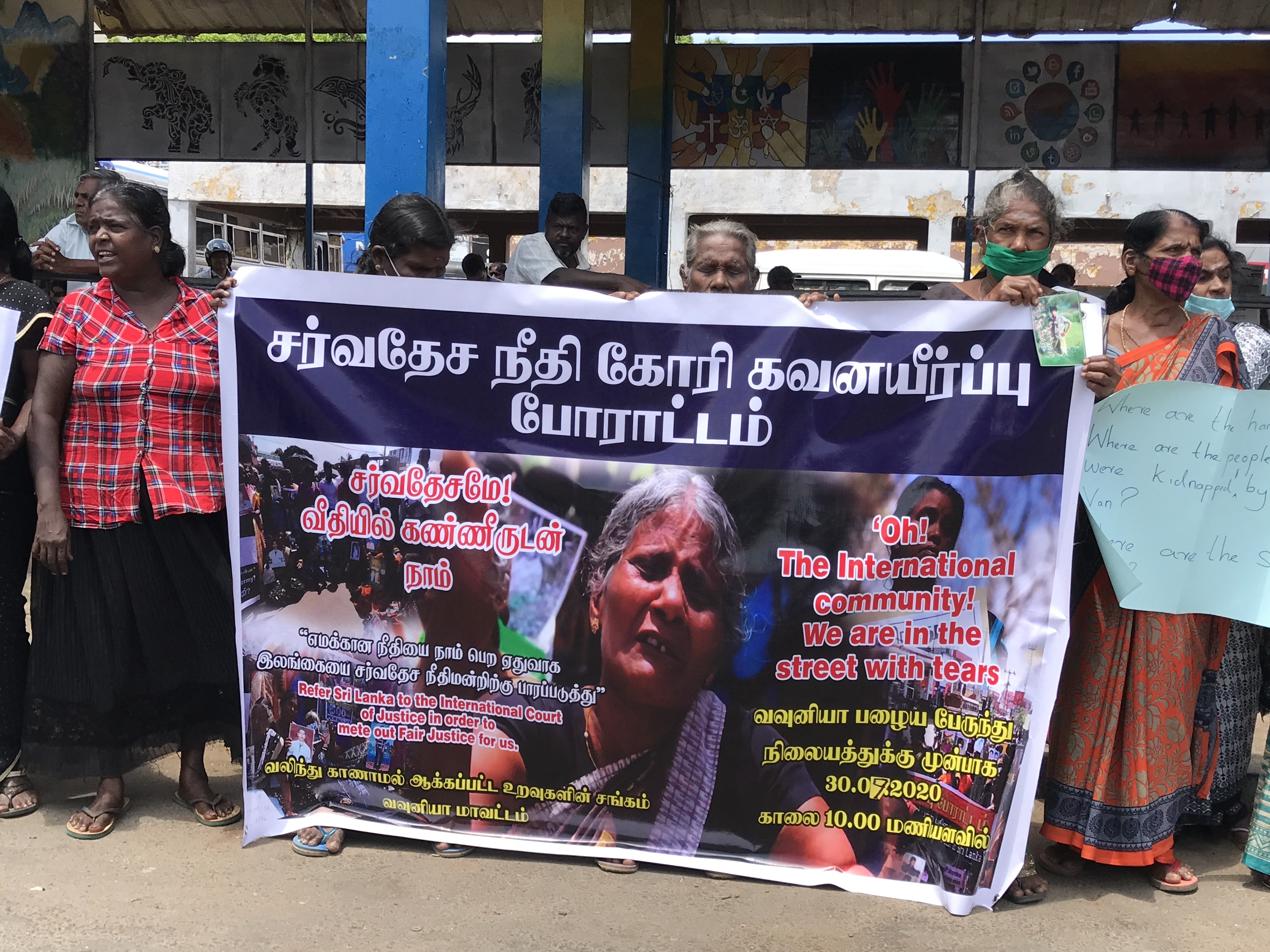
Demonstrations started this morning in Mullaitivu which also observed October 1 as a ‘day of sorrow’ and flew black flags to express their protest. Families of the disappeared in Mullaitivu commenced their protests on March 8, 2017 and today marks 1,303rd day of their demonstration.
Protests began in front of the main office of the association of families of the disappeared. Tamil families called on the Sri Lankan government to return the children, many of whom were last seen in Sri Lankan military custody.
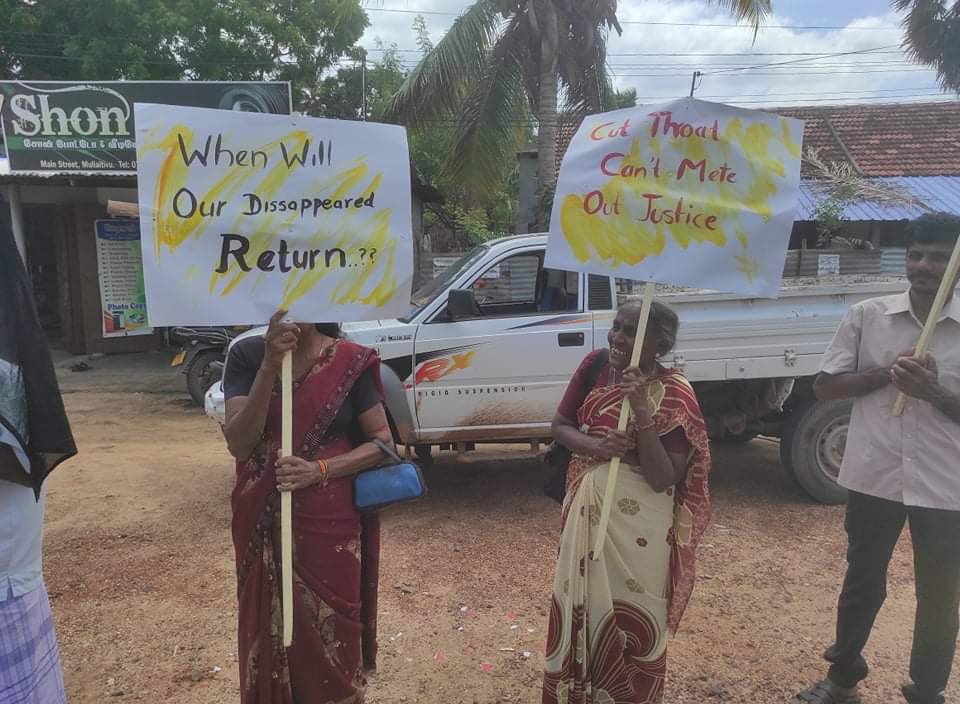
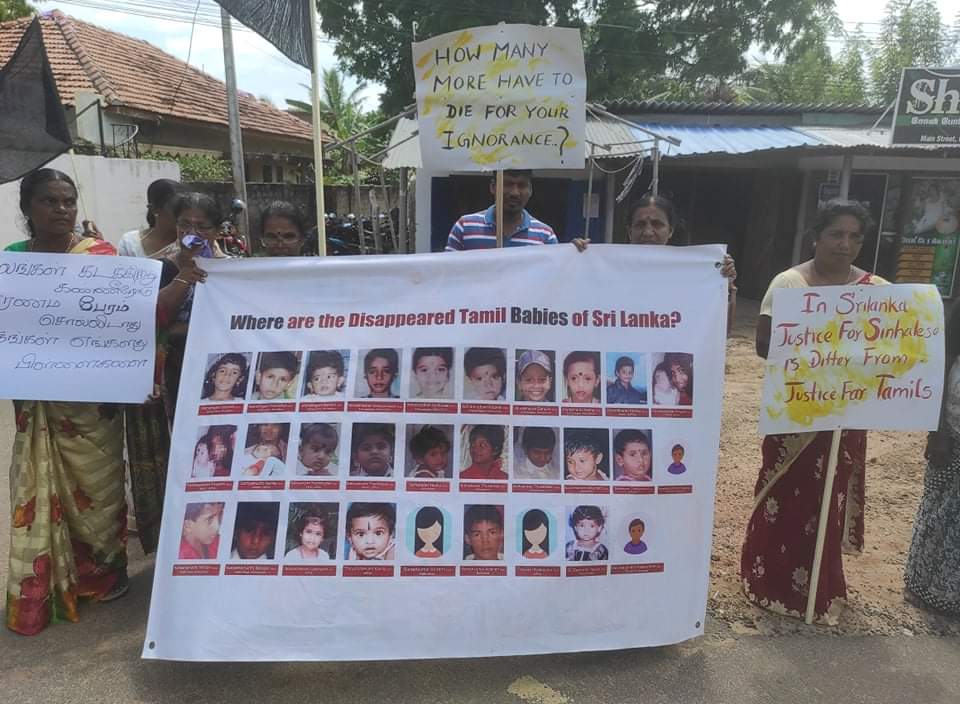
For years Tamil families across the North-East have called for information and answers from the state, with roadside protests across the homeland. To date, Sri Lanka has failed to fulfil any of their demands.
As part of a project to commemorate Children’s Day last year, the families of the disappeared documented the cases of 29 Tamil babies and young children, who were forcibly disappeared, including photos, names, and age of the children at the time of disappearance.
See the booklet here.
